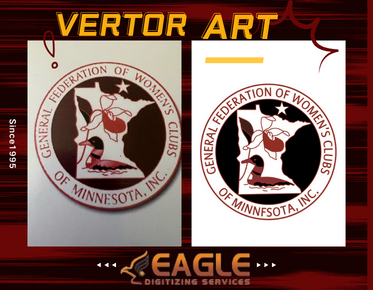Time-Saving Techniques for Fast-Digitized Embroidery Stitching
In the delightful
world of digitized embroidery, time is often the
enemy. Between the endless possibilities of design and the intricate details
that bring them to life, finding ways to streamline the process can be a
game-changer. Whether you’re a hobbyist or a professional embroiderer,
mastering time-saving techniques can elevate your stitching game to new
heights. Say goodbye to frustration and hello to efficiency! This guide reveals
the secrets that will unlock the door to quick and easy stitching, so you can
focus more on creativity and less on the clock.
Choosing the Right Equipment for Efficiency
Essential
Features to Look for in an Embroidery Machine
When it comes to
digitized embroidery, the right equipment can significantly impact your
efficiency. Look for machines that boast features such as a large embroidery
area, automatic threading, and built-in designs. An intuitive user interface
can also make a world of difference, streamlining your workflow and reducing
the learning curve. Furthermore, consider machines that offer adjustable speed
settings, allowing you to tailor the stitching pace based on your project
needs. Investing in the right machine can transform your embroidery experience
and save you valuable time.
How
Upgrading Your Tools Can Save You Time
Upgrading your
tools may seem like a hefty investment, but it often pays for itself in time
saved. Newer machines come equipped with innovative features that enhance
efficiency, such as multi-needle capabilities, faster stitching speeds, and
enhanced connectivity options. These advancements mean fewer interruptions
during the embroidery process, allowing you to complete projects more swiftly.
When you upgrade your tools, you’re not just acquiring new equipment; you’re
investing in a smoother, more enjoyable embroidery journey.
Batch Processing: The Art of Grouping Projects
How
to Organize Your Designs for Batch Processing
Batch processing
is an invaluable technique for any embroiderer looking to maximize efficiency.
Start by organizing your designs into groups based on similar themes, colors, or
project types. This method allows you to set up multiple projects
simultaneously, reducing downtime between designs. Consider creating a schedule
for your stitching sessions, dedicating time to complete each batch. This
strategic organization helps maintain focus and ensures that you’re making the
most of your time.
Benefits
of Multi-Project Stitching
Embarking on
multiple projects at once may seem daunting, but the benefits are immense. By
stitching several items in one go, you can capitalize on the setup time
required for your machine. Plus, this approach minimizes the frequent
transitions between different projects, allowing for a more fluid stitching
experience. Multi-project stitching can lead to greater productivity, leaving
you with more time to enjoy the creative aspects of embroidery.
Time-Saving Techniques for Threading
Quick
Threading Tips to Get Started Fast
Threading your
machine can be a tedious task, but there are ways to speed up the process.
Familiarize yourself with your machine’s threading system and practice it until
you can do it with ease. Pre-threading multiple machines, if you have them, can
also be a time-saver, allowing you to switch between projects without the
hassle of re-threading. Keeping your thread paths clean and free of tangles
will also help maintain efficiency in this crucial step.
Using
Automatic Threading Features on Your Machine
Many modern
embroidery machines come equipped with automatic threading features. This handy
option takes the guesswork out of threading, saving you time and frustration.
If your machine has this capability, make sure to utilize it! Not only does it
streamline your setup process, but it also helps ensure that your threads are
perfectly aligned, allowing you to jump straight into your projects without
delay.
Smart Hooping Techniques
The
Benefits of Using Magnetic Hoops
Magnetic hoops
can be a game changer when it comes to hooping efficiency. Unlike traditional
hoops, magnetic versions allow for quick placement of fabric without the need
for screws or clamps. This not only saves time but also ensures that your
fabric is held securely in place, reducing the risk of shifting during stitching. Investing in magnetic hoops can lead to
smoother project transitions and more consistent results, making your
embroidery sessions more enjoyable.
How
to Hoop Efficiently for Multiple Projects
Hooping multiple
projects can be streamlined with the right techniques. Begin by cutting your
fabric into standard sizes that fit your machine's hoop. Prepare several
projects in advance, ensuring that each piece is prepped and ready for
stitching. When hooped properly, fabrics can stay taut and aligned, reducing
the likelihood of errors and rehooping. Efficient hooping practices lead to a
smoother embroidery process, saving you both time and effort.
Optimizing Machine Settings for Faster Stitching
Understanding
Speed Settings: When to Crank It Up
Familiarizing
yourself with your machine’s speed settings can greatly influence your
efficiency. Higher speeds may allow you to complete projects faster, but it's
essential to strike a balance. Consider the complexity of your design;
intricate patterns may require slower speeds to ensure precision, while simpler
designs can be stitched at a brisker pace. Understanding when to crank up the
speed can help you optimize your time without sacrificing quality.
Adjusting
Stitch Density for Time Management
Stitch density
can impact both the look and speed of your projects. Thinner, less dense
designs tend to stitch out faster, while denser designs require more time and
thread. Experiment with stitch density during the design phase to find the
sweet spot that allows you to maintain quality while minimizing stitching time.
Adjusting stitch density strategically can help you complete projects more
efficiently without compromising the final result.
Utilizing Multi-Needle Machines
How
Multi-Needle Machines Can Cut Down Stitching Time
Multi-needle
machines are a dream for any embroiderer looking to save time. With multiple
threads loaded simultaneously, these machines allow you to switch colors
without the hassle of changing threads for every new shade. This capability
significantly reduces downtime between stitching different colors, enabling you
to complete intricate designs in a fraction of the time. If you often work with
complex designs, investing in a multi-needle machine could transform your embroidery workflow.
Best
Practices for Efficient Thread Changes
While
multi-needle machines reduce the need for constant thread changes, they still
require some maintenance. Keep extra bobbins pre-wound and ready to go to avoid
interruptions. Familiarize yourself with your machine’s threading system to
ensure that color changes happen smoothly. Establishing a systematic approach
to thread changes will help you maintain momentum throughout your projects,
keeping the stitching process efficient.
Using Templates for Consistency
Creating
Templates for Repeated Designs
Templates are a
fantastic way to maintain consistency and save time when creating repeated
designs. Establish a few go-to templates for your most popular projects,
allowing you to pull them up quickly whenever you need them. This method
ensures uniformity across designs while minimizing the time spent on initial
setup. By investing time in creating templates, you set yourself up for a
smoother and more efficient stitching experience.
How
Templates Can Streamline Your Workflow
Utilizing
templates can streamline your workflow significantly. When each design is
prepped with established templates, you can easily transition from one project
to another without rethinking your setup. This approach saves time during the
digitizing phase and allows for quicker execution in the embroidery phase. A
streamlined workflow means you can focus more on creativity and less on
logistics, enhancing the overall enjoyment of your embroidery journey.
Leveraging Software Tools for Efficiency
Overview
of Time-Saving Software Features
Modern digitizing
software is packed with time-saving features designed to enhance your
efficiency. Look for tools that offer batch processing, which allows you to
work on multiple designs simultaneously. Additionally, many programs have
built-in libraries of stitches, fonts, and embellishments that can speed up the
design process. Familiarizing yourself with these features can transform your
workflow, making it more efficient and enjoyable.
How
to Use Design Software to Your Advantage
To truly maximize
your efficiency, invest time in learning your software's ins and outs. Many
programs offer tutorials and resources that can help you navigate their
features effectively. Take advantage of shortcuts and customizations to tailor
the software to your workflow. By harnessing the full potential of your design
software, you can drastically reduce the time spent on each project, freeing up
more time for creativity.
Creative Use of Stabilizers
Selecting
the Right Stabilizer for Speed and Quality
Choosing the
appropriate stabilizer is crucial for both speed and quality in your projects.
Opt for stabilizers that are easy to use and compatible with your fabric types.
Tear-away stabilizers are excellent for quick projects, while wash-away options
are perfect for more delicate designs. Knowing which stabilizers to use can
enhance the overall quality of your embroidery and save you time during the
stitching process.
Prepping
Stabilizers for Quick Setup
Preparing your
stabilizers in advance can significantly speed up your embroidery sessions. Cut
stabilizers into the necessary sizes before starting your projects, so they’re
ready to go. Storing them in an organized manner will also help you avoid any
last-minute scrambling. By ensuring your stabilizers are prepped and organized,
you can dive straight into your projects without delay.
Tips for Efficient Thread Management
Organizing
Threads for Easy Access
Efficient thread
management can save you significant time during your stitching sessions. Invest
in a thread organizer that allows you to keep your spools tidy and easily
accessible. Consider categorizing your threads by color or type to make it
easier to locate specific shades. A well-organized thread system will ensure
that you can grab what you need without wasting precious minutes searching.
Pre-Winding
Bobbins: A Simple Time-Saver
Pre-winding bobbins is a simple yet effective time-saver. Spend a few moments winding several bobbins in advance so that they’re ready to go when you start stitching. This practice minimizes interruptions and keeps your workflow smooth. Having pre-wound bobbins on hand means you can focus on your designs rather than stopping mid-project to refill.
Incorporating Automation into Your Workflow
Exploring
Automation Features in Modern Machines
Automation
features in modern embroidery machines can drastically improve your efficiency.
Look for machines that offer automatic color changes, thread trimming, and even
built-in design adjustments. These capabilities take the hassle out of manual
tasks, allowing you to focus on the creative aspects of your projects. By
embracing automation, you can complete more work in less time while achieving
high-quality results.
How
to Use Automation for Efficiency
To maximize the
benefits of automation, familiarize yourself with your machine's features and
settings. Take time to explore the options available and how they can
streamline your workflow. Setting up your machine to automate certain processes
will help you maintain a steady pace while working. This proactive approach to
using automation can lead to a more efficient and enjoyable embroidery
experience.
As you embark on your embroidery journey, remember that efficiency is key to unlocking your full creative potential. By implementing these time-saving techniques, you can transform the way you approach digitized embroidery. Celebrate your progress, embrace your newfound skills, and encourage continuous improvement in your craft. With each stitch, you’re not just creating art; you’re crafting a story that showcases your unique style and creativity. Embrace the magic of efficient stitching and watch your embroidery game soar!



